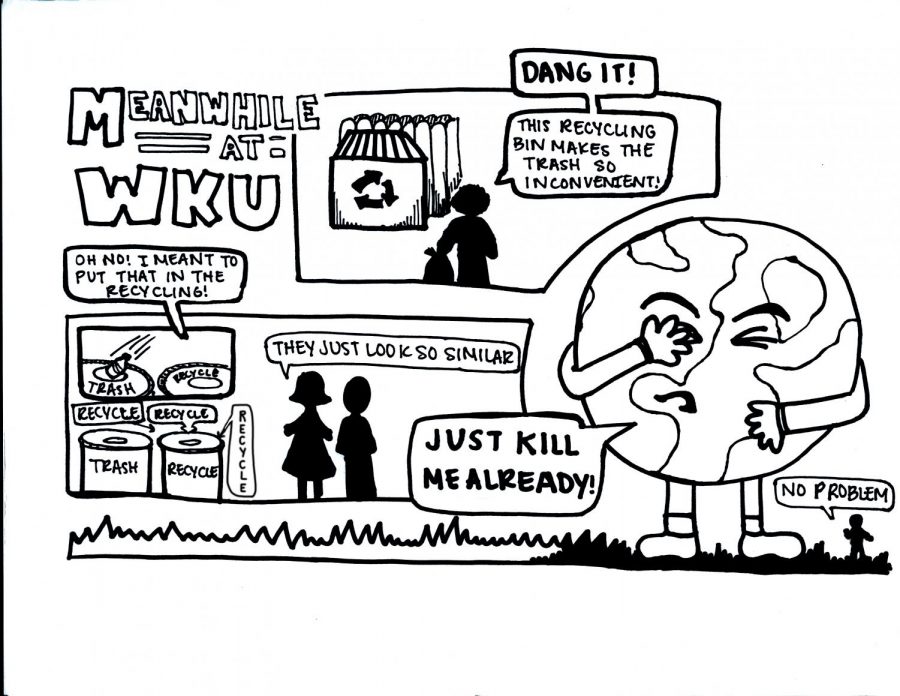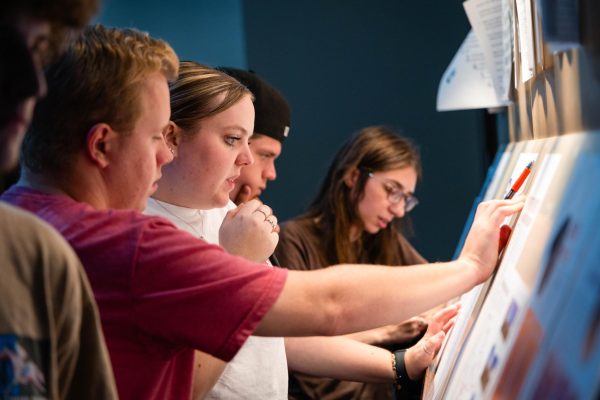EDITORIAL: Few students recycle, even with opportunities
October 6, 2015
The issue: WKU’s recycling rate is low and only slightly increasing even with all of the efforts made by the Department of Facilities.
Our stance: The student body should put more effort into recycling and producing less waste.
Recycling on campus couldn’t be any easier. There are recycling bins accompanying almost every trash can, and the cans even explain what is and isn’t recyclable. All dorm rooms are supplied with recycling bins, and recycling dumpsters are located near a few garbage dumpsters around campus.
WKU is making tremendous efforts to increase the proportion of waste it recycles on campus. This year, the department of facilities invested in 26 dumpsters specifically for recycling and 150 new blue recycling bins to provide a recycling bin with every trashcan on campus.
In 2014, WKU’s recycling rate increased to 13 percent from 11 percent in 2013. Also in 2014, WKU began composting all pre- and post-consumer waste from Fresh Food Co., according to an email from Elizabeth McGrew, WKU’s coordinator of resource conservation. This composting probably accounts for the 2-point percentage increase.
There are so many opportunities for students to recycle on WKU’s campus, yet very few students even try, and when they do, it’s often done wrong. Most of the items found in the various recycling receptacles around campus are just trash.
With all these recycling options available, why is waste being recycled so ineffectively?
Figuring out what is and isn’t recyclable can be confusing. The bins’ instructions refer to plastics numbered one to seven, but how to identify the type is unclear.
As a general rule, plastic bags, plastic eating utensils, glass and large pieces of cardboard should not be recycled in the bins on campus. To help, here is a list of everything that can be recycled:
1. Paper items: All paper, cups and plates. Even wax-coated paper cups are allowed.
2. Plastics: Any lids, cups, bottles or containers made of plastic.
3. Cans: Soda and food cans made of aluminum or tin.
4. Cardboard: Broken down and not too large if they’re being placed in smaller receptacles.
Lowering the amount of landfill-bound waste is essential for the protection of the environment. There’s an island of garbage in the middle of the Pacific Ocean, and the Environmental Protection Agency reported 250.9 million tons of solid municipal waste in 2012. We are running out of space and resources to deal with all the trash we produce. With so many recycling options available on WKU’s campus, there’s no reason why more people should not recycle. It’s easy to make a difference; start recycling!
























